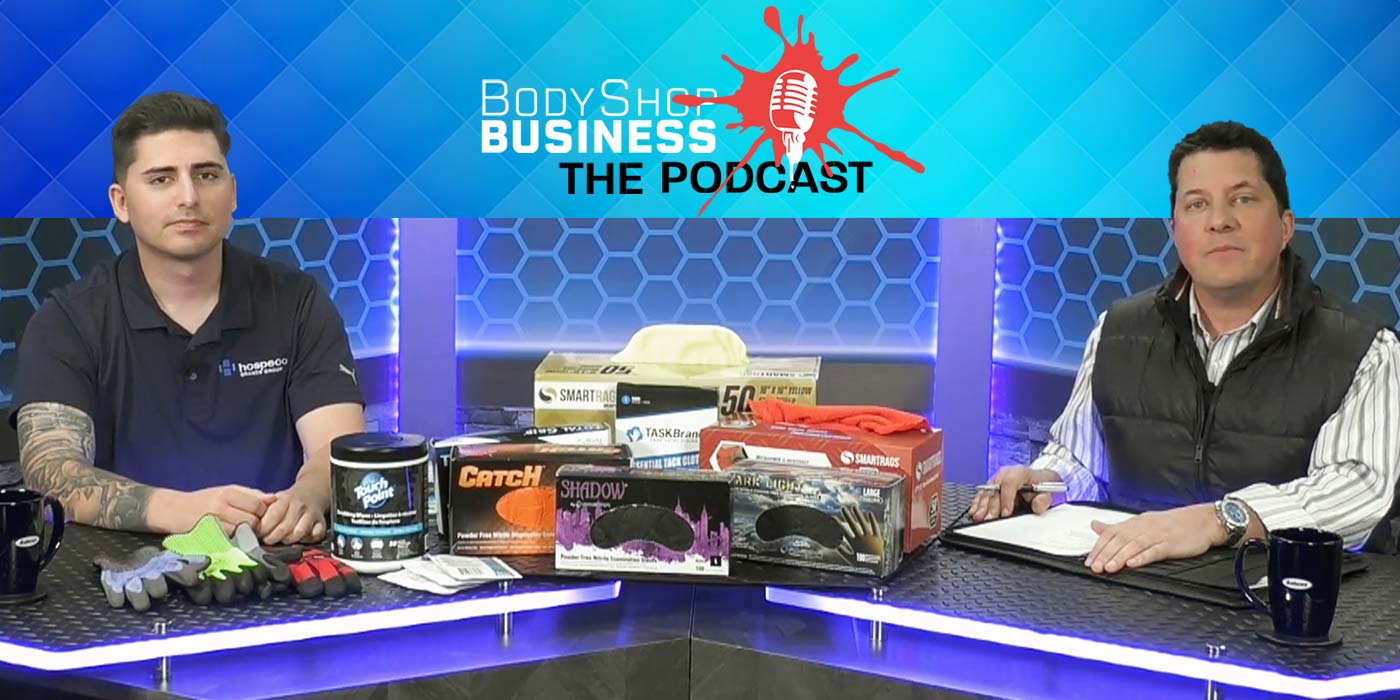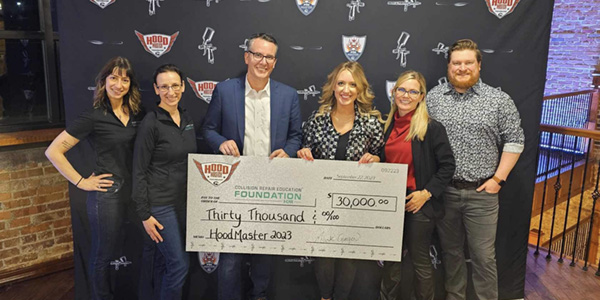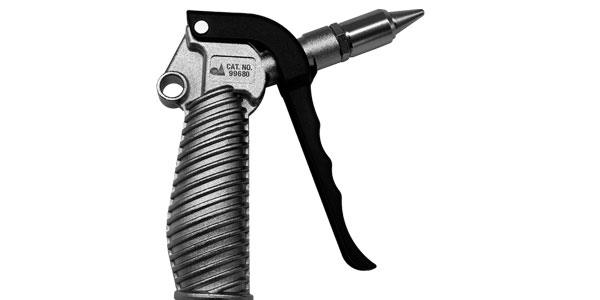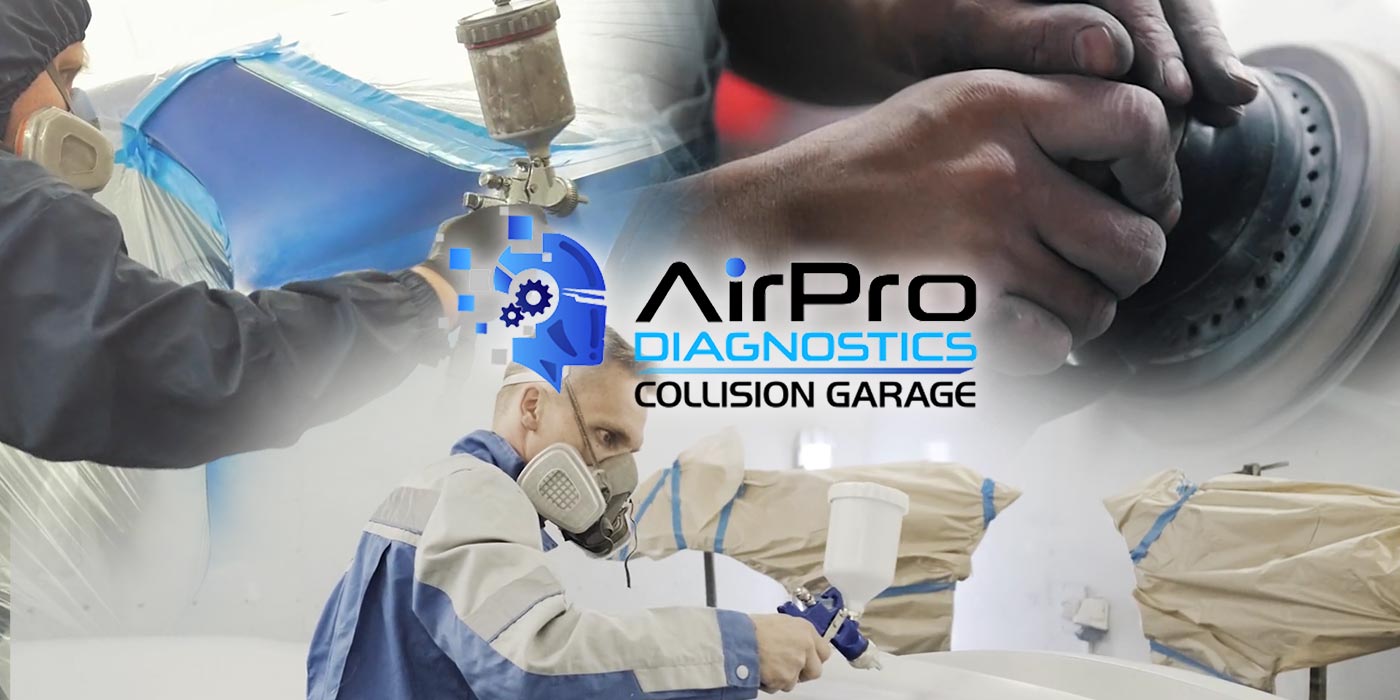Painting is a dirty job and a filthy way to make a living. I go into
work clean, but within minutes of starting my day, I’m covered from head to toe with dust. It’s easy to see why, considering we spend a good portion of the day sanding cars.
It’s OK if we get ourselves covered in dirt, but it’s definitely not OK if that dirt gets on the cars we’re painting. Many of us have an ongoing battle with dirt and trash in our paint jobs, and we have to answer several questions on this issue:
- Can we obtain the elusive non-buffer paint job?
- Is striving for the elusive non-buffer paint job worth it from a business standpoint?
- Is a dirty paint job the shop’s fault, or is buffing an aspect of the job that needs to be done and charged accordingly?
- Is the dirt-free paint job impossible to attain? Nothing’s impossible, and there are a lot of steps and extra procedures we can all do to greatly reduce the amount of dirt in our finished products.
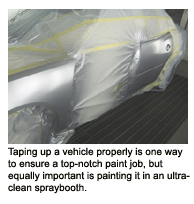
Environment and Equipment
Where you spray and what you spray with have a lot
to do with the type of results you get. Is your paint booth filthy? Is your gun crusty? How about your gun washer’s thinner? Is it thick, black and the consistency of maple syrup?
We all know paint booth maintenance is critical and that we need to change the filters on a regular basis. How many of you refuse to change the filters out of laziness until the booth literally has a permanent haze of overspray in it? I like to sweep the floor of my booth at the end of every day. I can’t count the number of times I’ve had a pretty clean job going only to inadvertently aim my gun at the floor and blast a puff of dirt into the fresh clearcoat. It’s one of the worst feelings ever, and it’s why I religiously clean the floor daily. The walls of a booth get mighty disgusting after a while, too. Lots of us neglect to hose the booth walls down often enough. It’s a pain in the rear, for one. But the walls get dirty so gradually that we really don’t notice how gross they are until we brush up against one of them and rip the arm off our paint suit.
It’s mighty important to keep your spray guns in tiptop shape. This basically amounts to cleaning them really well after each use. I believe any investment that keeps your gun clean is worth it. Keeping your gun washer clean and filled with fresh thinner doesn’t take much time or money, but you’ll reap the benefits for sure. I’m also a big advocate of using disposable liners for your paint gun. These systems save you crucial minutes and effort during the gun cleaning process, not to mention during the actual painting process. Shops that decide not to take advantage of these types of innovations usually do so because of the price. But I believe that might be a case of the shop stepping over a dollar to pick up
a dime.
Good Prep Work Pays
The prep work is the backbone of any good paint job. So it’s not surprising that what we do in the preparation stages of the job greatly affects the job’s outcome.
Back when I first started working in a body shop, painters only wet sanded. We had wet floors all the time and went through scuff paste like there was no tomorrow. Gradually, we were introduced to fancy dry sanding paper made just for us. Does whether we dry or wet sand have an influence on the outcome of our paint jobs and the amount of dirt we produce? That’s debatable, but there’s no debate that you can achieve fantastic results whether you favor your DA and a dust mask or a water bucket and wet shoes. For the record, I’m a nonconformist who has no problem either wet or dry sanding. The technique I choose is based on the job and how I feel at the moment. The main thing to remember with sanding is that the surface should be cleaned before and after you’ve accomplished your sanding task.
If we want a paint job to be clean, we have to think clean at all times. Everybody should know by now that you don’t start sanding on a car until after that panel is clean. So make sure you have your water-based and solvent-based cleaners within reach.
One of the most effective yet underutilized steps to paint prep is thoroughly washing the vehicle. If you want to have consistently clean jobs, the most important thing you can do is hose that car down with plenty of water. A pressure washer works great, but equally great results can be had with a quality hose. Most painters skip this step altogether, thinking that it’s a waste of time and makes for a mess during masking. I would argue that it’s a big timesaver, and once you do it a couple of times, you won’t want to skip the step ever again.
Understandably, you’re not detailing the car, so I put my main focus on the area I’m painting and the immediate surrounding areas. I aim the water at all the cracks and crevices that dirt tends to hide, especially the jambs and wheel wells. Of course, after you soak the car, you’ll need to dry it and blow it out really well. Blow it and wipe it off until the water stops coming out of those areas where you know it’s lurking. This seems like an incredibly time-consuming task, but in reality it’s only about 10 minutes of your time. Start doing it and make it a habit.
Get Paid Properly
I couldn’t write about all these steps and precautions to achieve clean paint jobs if I didn’t mention the importance of charging for your efforts. For far too long, this industry has failed to charge accordingly for what it takes to complete a lasting, quality repair. Like many of you, I get paid by the classic flat-rate pay system. I get paid the same whether I perform a dirty or spotless paint job. I long for the days when I’ll see a bonus of some sort for putting forth the extra effort and time required to do a nice job.
Shops are often unwilling or scared to charge for the steps required to do what’s necessary for clean paint work. They’re told (by a wrongfully involved third party) that it’s all included (included where?). And then in an effort to get paid for any required sanding and polishing of the finish, they’re often told that it’s the shop’s fault for any flaws in the paint work. But that’s not the case on both counts. Shops deserve to be paid for the jobs they do, and dirt is a fact of life. You can take every precaution and extra step you’d like during your prep work and still end up having to buff a car. Is that your fault? No, it’s the reality of the trade we’re in. If you apply sticky liquids to a car
using air pressure, dirt happens – whether you, your customers or insurance companies like it
or not.
Writer Nathan Tarr has been working in and around the collision repair industry for the past 12 years and admits to being “thoroughly addicted to auto body work. It’s my hobby as well as my job.” Sikkens certified and PPG certified, Tarr has been working as a painter for the past five years. Tarr is also a member of the Coalition for Collision Repair Excellence (CCRE) because “it was one of the only ways I could find for a technician to help make a difference.” He has been married for nine years to his lovely wife Wency – “I’ve had my eye on her ever since she moved up the street from me in the seventh grade.” They have a 2-year-old son, Hank, who likes to hunt for worms in the backyard and hide the remote control. Tarr can be reached at [email protected].
|
Keep Yourself Clean!
The last major area of focus when it comes to dirt is the painter himself. After a couple hours of rolling around in the dust, we all get pretty grimy and dusty. That’s where the trusty paint suit comes in handy. Some painters are religious about wearing one. Others never do. Safety concerns aside, a nice, clean paint suit is as important to the cleanliness of the job as having a clean paint gun. I get a new, high-quality paint suit at least once a month. For those unfortunate few like myself who have receding hairlines, make sure you cover your dome. Not only is a stray hair a perfect way to ruin a good paint job, it’s also a painful and depressing reminder that you’re going to look just like your dad one day. |










